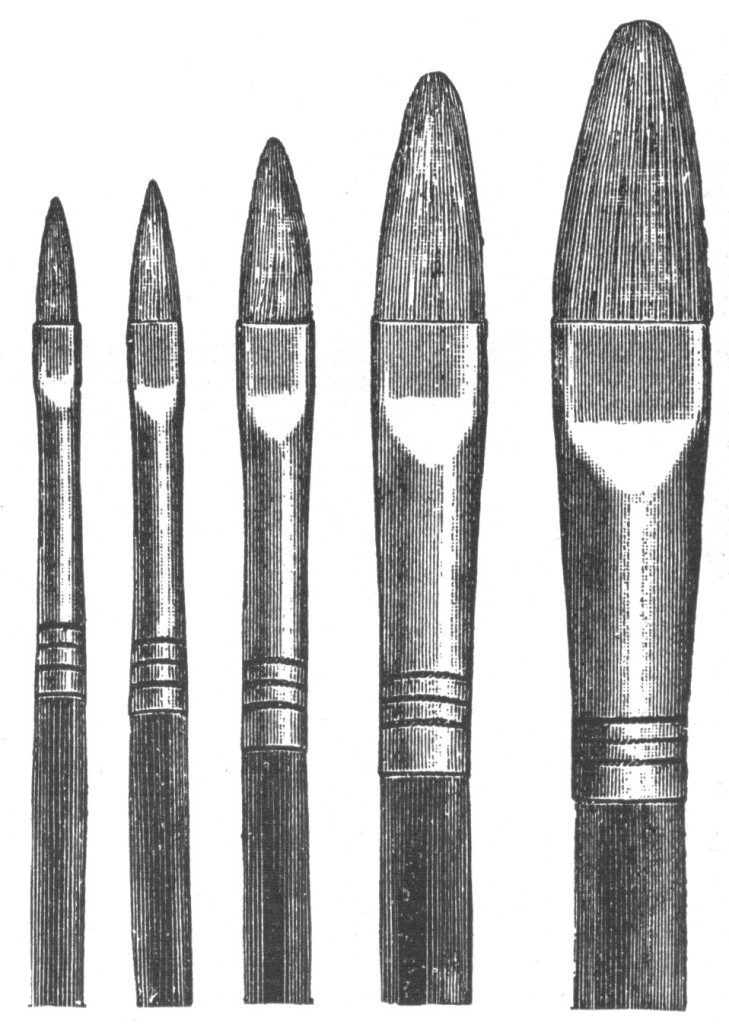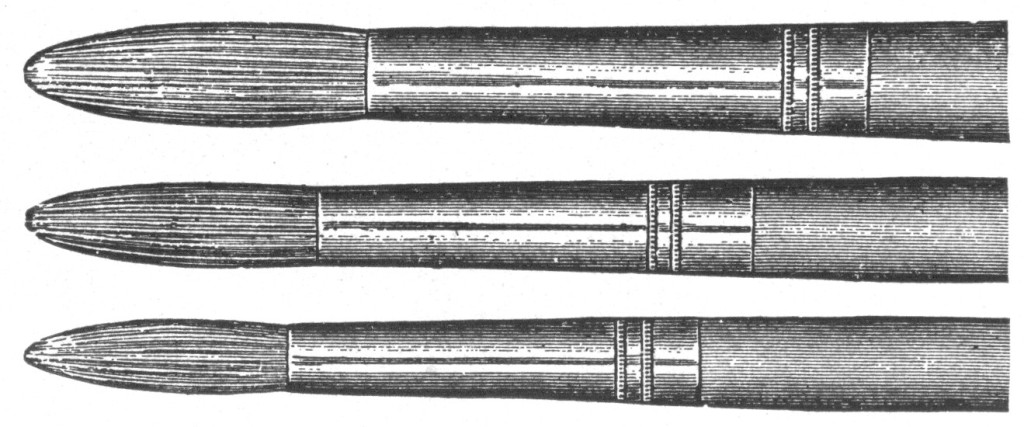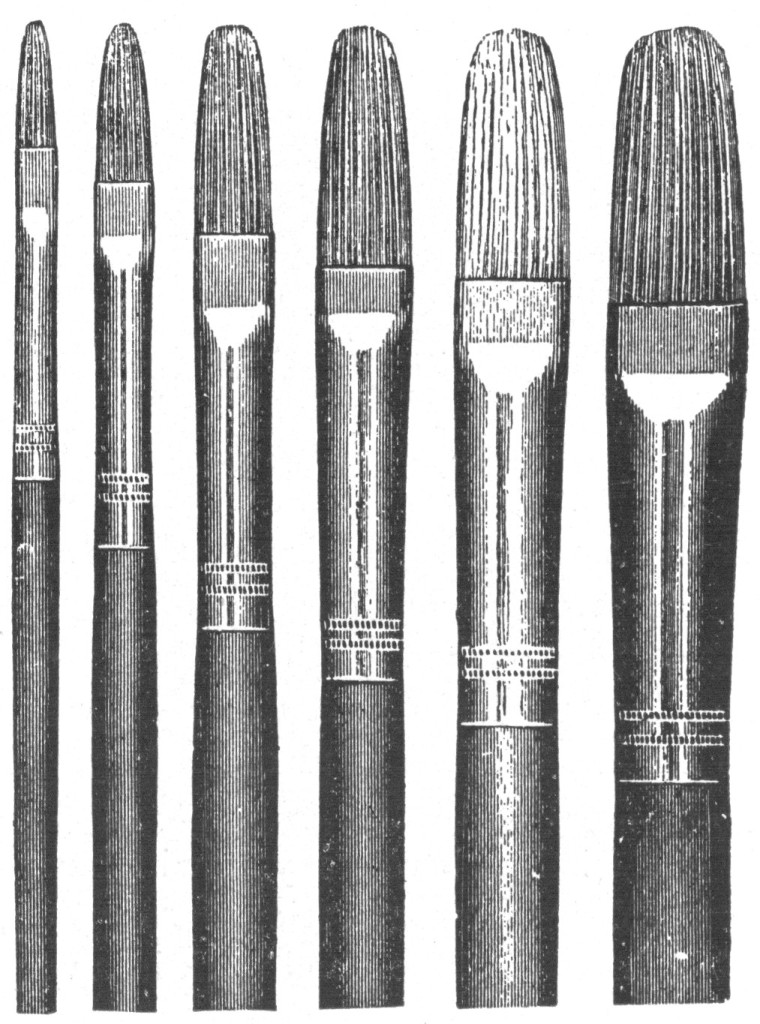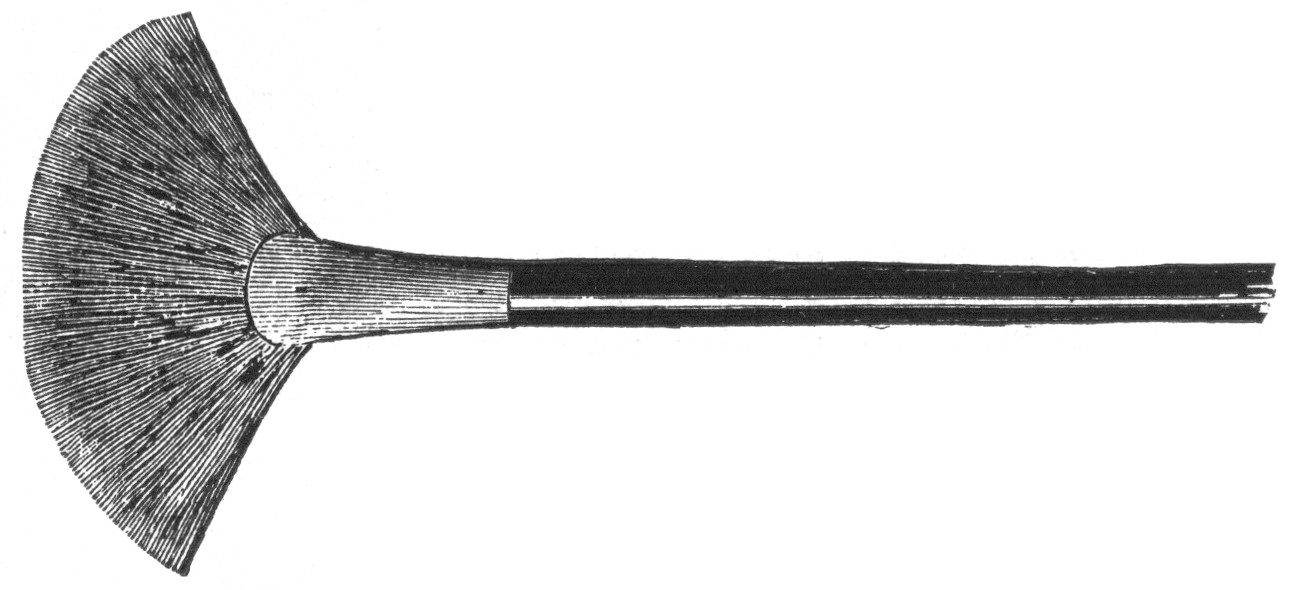Oil painting essential materials: Selection of BRUSHES

Oil painting essential materials:
Selection of BRUSHES
Selection.—Never buy a brush without testing its evenness, as has been advised in the care of sables. Feel carefully the end of the bristles also, and see that the “flag” is there. All brushes are kept together for packing by paste in the bristles. See that this is soaked off before you test your brush.
Round or Flat.—It will make little difference whether you use round or flat brushes. The flat brush is most commonly preferred now, and most brushes are made that way. So you had better get that kind, unless you have some special reason for preferring the round ones.
Handles.—Whether the handles are nicely polished, also, is of no importance. What you are to look to is the quality of the bristles and of the making; the best brushes are likely to be nicely finished all over. But if you do find a really good brush which is cheaper because of the plain handle, and you wish to save money, do it by buying the plain-handled one.
Sizes and Shapes.—You will need some quite large brushes and some smaller ones, some square ones and some pointed.
Here are three round brushes which, for all sorts of painting, will be of very general utility. For most of your brushes select the long and thin, rather than the short and thick ones. The stubby brush is a useless sort of thing for most work. There are men who use them and like them, but most painters prefer the more flexible and springy brush, if it is not weak. So, too, the brush should not be too thick. A thick brush takes up too much paint into itself, and does not change its tint so readily. For rubbing over large surfaces where a good deal of the same color is thickly spread on the canvas, the thick, strong brush is a very proper tool. But where there is to be any delicacy of tone, it is too clumsy; you want a more delicate instrument. The same proportions hold with large and small brushes, so these remarks apply to all.
Flat Brushes.—This is particularly applicable to the flat brushes, and the more that most of your brushes will be flat.
You should have both broad-ended and pointed brushes among your flat ones. For broad surfaces, such as backgrounds and skies, the broad ends come in well; and for the small ones there are many square touches where they are useful.
For the smaller brushes you will have to be very careful in your selections. For only the silkiest of bristle will do good work in a very small brush, and then the temptation is to use a sable, which should be resisted. Why you should avoid using the sable as a rule is that it will make the painting too “slick” and edgy. There is a looseness that is a quality to prize. All the hardness, flatness, and rigidity that are desirable you can get with the bristle brush. When you work too much with sables, the overworking brings a waxy and woodeny surface, which is against all the qualities of atmosphere and luminosity, and of freshness and freedom of touch.
Some of the most useful sizes of the more pointed brushes are shown here. There are, of course, sizes between these, and many larger; but these are what you will find the best. It would be better to have more of each size than to have more sizes. You should try to work with fewer rather than more sizes, and, as a rule, work more with the larger than with the smaller brush, even for fine work. You will work with more force and tend less to pettiness, if you learn to put in small touches with the largest brush that will do it. Breadth is not painting with a large brush; but the man who works always with a small brush instinctively looks for the things a small brush is adapted to, and will unconsciously drift into a little way of working.
The fan brush, such as here illustrated, is a useful brush, not to paint with, but to flick or drag across an outline or other part of a painting when it is getting too hard and liney.
You may not want it once a month, but it is very useful when you do want it.






This Post Has 0 Comments